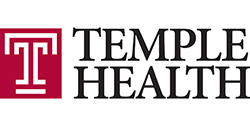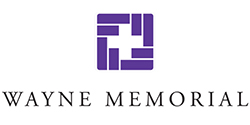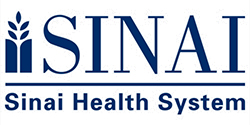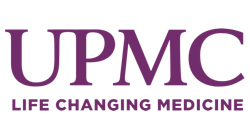2023 Medicare CPT Code Reimbursements for Remote Patient Monitoring (RPM)
How did Medicare reimbursements for Remote Patient Monitoring (RPM) change for 2023?
In November 2022, the Centers for Medicare and Medicaid Services (CMS) updated the Final Rule that provides guidelines for Medicare payments under the Physician Fee Schedule (PFS). These updates and any subsequent revisions went into effect on January 1, 2023 and will impact how all clinical providers bill for Medicare services, including the remote patient monitoring (RPM) services they provide to patients.1
In 2023, CMS will continue to support telehealth and RPM services. By expanding the landscape for RPM services and including five new codes under the remote therapeutic monitoring (RTM) category, CMS hopes to improve patient access to remote patient monitoring.
Below, we’ll discuss the updates to the 2023 CMS RPM CPT codes and reimbursement rates and review the key differences between RPM and chronic care management.
How is RPM Different from Chronic Care Management (CCM)?
While there are slight differences in the care management codes between remote patient monitoring and chronic care management, the primary difference in the respective overall CPT code sets relates to the fact that RPM also includes the provider receiving and monitoring patient data from a remote monitoring device (e.g., blood pressure cuff, weight scale, etc.), and the additional reimbursements available when supplying and monitoring those devices.
When providing RPM, clinical staff collect and interpret a range of physiological data from patients who are living with acute or chronic conditions. These patients receive care from the comfort of their homes, minimizing transportation barriers that could otherwise prevent them from traveling to health facilities.2
The RPM CPT codes enable clinical providers to receive reimbursement when collecting and interpreting patient data using devices like:3
- Weight scales
- Pulse oximeters
- Blood glucose monitors
- Blood pressure monitors
- Specialized heart monitors
For billing purposes, CMS requires clinical providers to collect and electronically transmit patients’ physiological data. The RPM CPT codes do not allow patients to self-report this data.
The 2023 Reimbursement Rates for the RPM CPT Codes
In 2023, the Relative Value Unit (RVU) Multiplier for all medical services billed to Medicare is $33.89, a modest decrease compared to $34.61 in 2022. However, the RVU-based conversion will vary by clinical specialty and the geographic locations of practices or facilities.4
Below are the 2023 Medicare CPT code reimbursements for remote patient monitoring, including their corresponding description and average reimbursement:
| 2023 RPM Reimbursement Rates | ||
|---|---|---|
| CPT Code | What it Covers | 2023 RATE |
| 99453 | Initial setup of the remote monitoring device and educating the patient on how to use it, including connecting it to other devices, if needed. | $19* |
| 99454 | Monthly remote monitoring with daily electronic recordings of physiological data from the patient. At a minimum, a provider must receive RPM recordings for 16 days during the 30-day period in which services are billed. | $50* |
| 99457 | Remote patient monitoring treatment & management that includes dialogue between the clinical staff and patient and lasts at least 20 minutes, billed per calendar month. | $48* |
| 99458 | Each additional 20 minutes of patient monitoring treatment & management services provided, billed per calendar month. | $39* |
| 99091 | Clinical providers can bill for the time spent collecting, interpreting, and processing physiological data from patients. Here, patients must receive RPM services for at least 30 minutes every 30 days. This does not require interactive communication with patients. | $54* |
Optimize Your Existing RPM Model with Signallamp
Robust infrastructure, including dedicated care management, is critical to the success of any remote patient monitoring program. Outside of an established RPM model, without infrastructure and dedicated care management, patients will quickly disengage and devices will become paperweights, causing reimbursements to dry up and the program to shudder. Providers also have limited bandwidth and are likely to disengage if the program is not supported with care management and/or they are forced to document outside of their normal EMR workflows.
At Signallamp, we offer robust RPM infrastructure to help you scale and sustain your RPM program over time; we streamline critical steps such as enrollment and consent, provide dedicated nurse care managers to actively monitor and triage your patients based on your predetermined clinical parameters, and manage device inventory, shipping & setup. Our goal is to help you scale a sustainable remote monitoring program to improve patient outcomes and reduce costs in the long term.
Schedule a consultation today to learn more.
1 CMS. Calendar Year (CY) 2023 Medicare Physician Fee Schedule Final Rule. https://www.cms.gov/newsroom/fact-sheets/calendar-year-cy-2023-medicare-physician-fee-schedule-final-rule
2 HHS. Telehealth and Remote Patient Monitoring. https://telehealth.hhs.gov/providers/preparing-patients-for-telehealth/telehealth-and-remote-patient-monitoring/
3 HHS. Telehealth and Remote Patient Monitoring. https://telehealth.hhs.gov/providers/preparing-patients-for-telehealth/telehealth-and-remote-patient-monitoring/
4 CMS. Calendar Year (CY) 2023 Medicare Physician Fee Schedule Final Rule. https://www.cms.gov/newsroom/fact-sheets/calendar-year-cy-2023-medicare-physician-fee-schedule-final-rule




